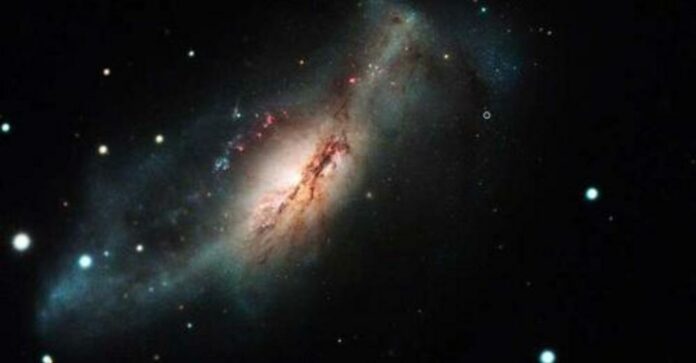Astrophysicists have proposed a class of supernova known as electron-capture for 40 years, but couldn’t prove their existence. Now, however, astronomers from 25 institutions have combined to provide evidence for one such event in Nature Astronomy. Moreover, their work builds the case that one of the most famous supernovas of all time belongs to this category.
Two main sorts of supernova are known: giant stars that undergo core-collapse when the outward force of their fusion can no longer overcome gravity and white dwarfs that pull enough materials off their neighbors to generate a thermonuclear explosion. There are confirmed and proposed subclasses within these two, but electron-capture supernovas would be a genuine third class.
Core-collapse supernova have to be at least 10 times the mass of the Sun, creating the pressure to forge the iron that comes to make up their cores. The theory behind electron-capture supernova is they involve stars with 8–10 solar masses, which have oxygen-neon-magnesium cores and never produce their own iron.
If the immense pressure at the center of these stars is great enough to cause the electrons surrounding these atoms to be squeezed into the neon and magnesium nuclei the space between atoms will shrink, the theory goes. This would cause the core to implode, initiating a rebound explosion, rather than becoming a white dwarf as a still lighter star would do.

A super-asymptotic giant branch star (SAGB) (left) and its core. SAGB stars are the end state of stars in a mass range of around 8–10 solar masses, whose core is pressure supported by electrons (e-). When the core becomes dense enough, neon and magnesium start to eat up electrons (so called electron-capture reactions), reducing the core pressure and inducing a core-collapse supernova explosion. Image Credit: S. Wilkinson; Las Cumbres Observatory
Since Professor Ken’ichi Nomoto of the University of Tokyo proposed this idea in 1980 astronomers have tried to model how an electron-capture supernova would look, and particularly how it would appear different from the known sorts.
University of California, Santa Barbara graduate student Daichi Hiramatsu identified six distinctive characteristics expected of electron-capture supernova, including large amounts of material thrown off before the explosion and distinctive light curves, chemical composition and elements formed. After examining records of hundreds of recorded supernova Hiramatsu identified several that have some of these features, but only one that ticks all boxes; SN 2018zd.
“We started by asking ‘what’s this weirdo?'” Hiramatsu said in a statement. “Then we examined every aspect of SN 2018zd and realized that all of them can be explained in the electron-capture scenario.”
As anticipated SN 2018zd was a bit of a squib by supernova standards – we might not have seen it at all were it not in the galaxy NGC 2146, a relatively close 31 million light-years away. This closeness means Hubble images taken before the explosion reveal a suspected SAGB star at the explosion’s location – exactly the type of star expected to generate electron-capture supernovas.
However, it’s unlikely 2018zd would be the first electron-capture supernova we have seen. In other cases, distance or timing prevented us from collecting relevant data to assess some of the six indicators. A particularly notable example is the supernova of 1054, which produced the famous Crab Nebula as a remnant.
The Crab’s X-ray intensity has made it one of the most studied astronomical objects, and many have noted it has a number of electron-capture features. Unfortunately, however, while Chinese astronomers of the day recorded many details – including its visibility during daytime for 23 days, and lingering for almost two years – they lacked the capacity to record its spectrum.
Nevertheless, Hiramatsu and co-authors believe similarities between SN 1054 and SN 2018zd strengthened the case for SN 1054 as electron-capture.
Nomoto is predictably delighted in the vindication, saying; “I am very pleased that the electron-capture supernova was finally discovered, which my colleagues and I predicted to exist and have a connection to the Crab Nebula 40 years ago. I very much appreciate the great efforts involved in obtaining these observations.”

